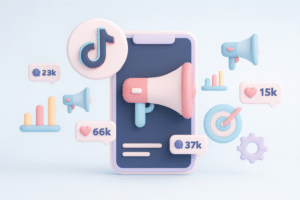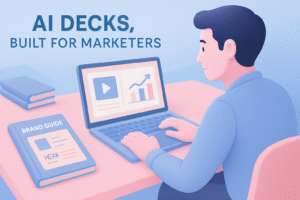In 2025 and beyond, the Next-Gen Meta Ad Agency is transforming how businesses connect with and win over their audience.
I have found that the combination of artificial intelligence, data analytics, and creative ad optimization is making the ad space almost as efficient as nobody could ever dream about.
Brands today do not settle for just having campaigns run; instead, they demand insights, visibility in growth, and steady returns.
From what I have seen, firms seeking high conversion rates are often opting for smart automation tools and predictive analytics.
This change has been very noticeable in Google Ads management services, where agencies use machine learning to identify top-performing keywords, improve targeting accuracy, and manage ad spending intelligently.
A Google ads management company has turned out to be less like a conventional marketer and more like a data-driven strategist simultaneously.
In my view, a Google Ads management agency makes use of real-time analytics to carry out adjustments on the spot, making certain that every click is worthwhile.
The use of AdWords management services is also becoming a core driver of campaign success.
According to market research, businesses integrating Google AdWords services with AI-based optimization see an average of 25–40% better ROI compared to those relying solely on manual inputs.
Thus, the emergence of Google Adwords management services has, therefore, become synonymous with precision marketing in today’s competitive ecosystem.
AI-Driven Campaign Management: The Brain Behind Modern Ads
AI has completely changed campaign management. Besides executing automated bidding strategies, AI has enabled marketers to take more intelligent and quicker actions.
The study I’ve done indicates the use of AI systems has spread in next-generation ad agencies that not only predict consumer behavior but also suggest the optimal ad creatives, messaging, and timing for getting the most engagement Google ads management agency.
For example, while human beings would need to compare ad variations manually, AI tools can quickly analyze thousands of creative combinations and find out which one works the best for each demographic. This improvement not only saves time but also amplifies the output.
According to my information, companies that have employed AI for optimization have experienced click-through rates going up by as much as 60%.
On top of that, AI is a factor that makes a difference in the remarketing process. Through identifying patterns from user activities, it manages to bring back the customers who are the most likely to buy at just the right moment in their journey.
According to marketing research, AI-based predictive systems demonstrate such high precision in forecasting the performance of ads that they help businesses to spend their budgets more wisely.
The Power of Advanced Analytics in Meta Advertising
Data analytics is really the main factor that contributes to the success of every digital campaign. The new-age Next-Gen Meta Ad Agency is applying analytics for deep behavioral understanding apart from reporting.
Analytics has been seen to enable marketers to discover the audience’s motives, preferences, and even how to acquire them, thus making campaigns vastly relevant and personalized.
Today’s agencies make use of cross-channel analytics to bring together the information from Meta, Google, YouTube, and even offline channels.
This all-around view is what is needed to determine what the real factors driving conversions are.
According to my information, sophisticated analytics tools are able to compute customer lifetime value, engagement trends, and ROI almost instantly. Thus, the same is done based on the precision of the dollar marketing allocated to the specific purpose.
Besides that, predictive analytics—powered by machine learning—gives the advertiser the complete picture of the trends before they occur.
By predicting the audience’s intention and keeping an eye on the ad’s performance, brands can change their tactics ahead of time before they lose money on an underperforming campaign. Thus, it has been found through market research that companies using predictive analytics in ad campaigns get results that are almost 50% more effective than those ad campaigns not using the insights.
Automation: Streamlining Performance and Efficiency
Automation is the unrecognized but crucial component of nowadays advertising, which is the hero of the day. It has completely changed the way ads are managed by the agencies in terms of optimizing the campaign, allocating budgets, and targeting audiences.
According to my research, the automated bidding strategies on Meta and Google have already begun adjusting the bids in real time, thereby guaranteeing that the ads are shown to the most suitable users at the most cost-effective price.
I have also come to know that the automation includes creative testing as well. An automated A/B testing can very quickly replace the ads that are not performing well with those that have a high performance, hence reducing waste and increasing the impact.
This makes it possible for marketers to run campaigns at a large scale without losing the quality or precision that they are used to.
According to the market research, automation leads to a decrease of almost 30% in human errors and operational costs, which means that the agencies will have more time to devote to the creative strategy and storytelling. The difference between manual monitoring and the smart systems is what distinguishes the Next-Gen Meta Ad Agency from the traditional digital marketing companies.
Personalization and Customer-Centric Strategies
The future of advertising will be all about the individual. The consumers are looking for a one-of-a-kind experience based on their requirements and tastes.
It has been found that AI is the driving force behind personalization, which results in the delivery of individualized content anywhere and everywhere. Ad agencies are already experimenting with creative ads whose changes to the creatives are done automatically according to the user’s actions, location, and interests.
Personalization, as per my knowledge, can increase engagement rates up to 80% at the most. This is because consumers who notice the ads as relevant are the ones who will most likely pay some attention and even interact with them.
A modern-day advertising firm utilizes first-party data, predictive analytics, and behavioral modeling in the process of creating hyper-targeted campaigns.
Simultaneously, market research confirms from different sources that customer-centered strategies also work to a great extent in fostering brand loyalty.
The stronger the feeling of being understood and valued among the audiences, the more they would be engaged and loyal for a longer time. Such a close relationship between the brand and the consumers is what the new-age advertising approach is based on.
Creative Intelligence: The Fusion of Art and Algorithm
The role of data in advertising has been so significant that it started to share or even take over the spot of the creative process, though creativity remained the main factor.
To me, creative intelligence is the integration of the human artist and the accurate machine. The AI-driven tools in the analysis of colors, formats, and tones across different demographics offer the creatives remarkable insights for the ad design process meta ads company.
In my view, the situation is so favorable that the advertising agencies are no longer the only ones to benefit from Meta’s highly advanced creative testing tools for the realization of visually pleasing, emotionally engaging, and data-informed ads.
This blending of art and the algorithm not only attracts the viewers’ attention but also prompts them to take action.
Industry experts believe that the use of creative intelligence in ads can make them up to 40% more unforgettable. In other words, when creativity and data are applied together, the outcome is a massive rise in engagement, and this is why it becomes one of the future Meta Ad Agency’s key strategies.
Ethical Advertising and Data Privacy
With the advancement of technology, the requirement to apply it in a moral way also advances. Through my research, I found that privacy laws such as GDPR and CCPA have changed the entire scenario of agencies in terms of user data collection and handling.
The use of transparency and consent in digital advertising has become a must-have.
In my view, the emerging Meta Ad Agency has made user trust its priority, thus choosing privacy-first measures.
They rely on aggregated data, context-based targeting, and consent-marketing approaches to keep up with compliance without compromising on performance.
According to the market analysis, brands that play the data ethics card right enjoy a 25% uplift in the trust rate of consumers. Trust, after all, is the currency of digital relationships—and ethical practices are the pillars of sustainable success.
Conclusion
In summary, the Next-Gen Meta Ad Agency is nothing less than the digital marketing future—a combination of AI intelligence, data analytics, automation, and creativity.
From my perspective, this model takes every ad to be smarter, quicker, and more influential. Within the current context, a meta ads agency’s function is no longer limited to campaign execution; it is more about fostering relationships that last through the synergistic use of insight and innovation.
Consequently, market research maintains that the cooperation with a meta advertising agency or meta ad agency propels brands to get their results exactly measured and reported with the utmost precision and transparency.
Modern meta ads company procures a shape of commercial consciousness that justifies its presence in the advertising world, either through the effects of data-driven optimization or through emotionally intelligent storytelling.
In the end, the transition toward AI and analytics is not only going to be seen in the area of efficiency improvement but in a complete transformation of how we audience.
The meta ads services model marks both the future and present of technology-based, eco-friendly, and superior-quality marketing in the digital age.








